537. Turbo (Batillus) cornutus Lightfoot, 1786 Sazae (Washou)
1387. Meretrix lusoria (Roding, 1798) Hamaguri (Mokuhachi) Bungou, Hamaguri.
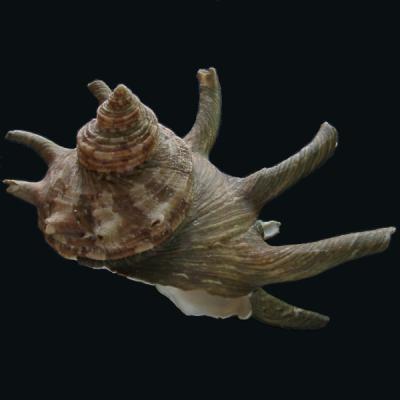
Sazae
Turbo (Batillus) cornutus Lightfoot, 1786
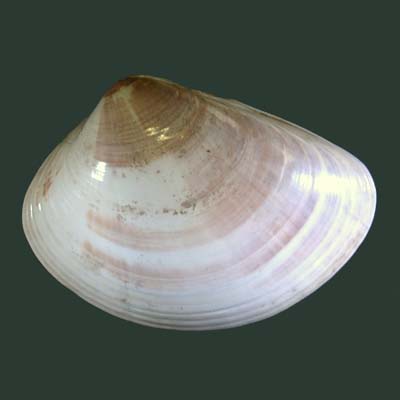
Hamaguri
|
Honzo Wamyou Sukehito Fukane 918? The oldest honzo book in Japan. 29 species(*) of shells' Japanese names are recorded. Each articles are simple and many of them are uncertain. *)Kaki, Umukinokai, Awabi, Mumanokubogai, Matenokai, Baishi, Katatsumuri, Henatari, Mina, Tagai, Tatsubi, etc. |
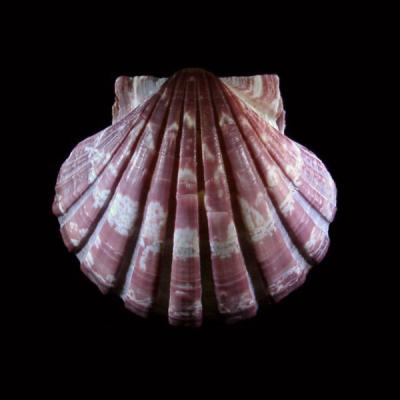
Itayagai |
|
Wamyou Ruishu Sho 20vol. Shitagou Minamoto 930? Book to which Japanese name of things was decided referring to books in Japan and China by Kinshi naishinnou instruction. Encyclopedia in the Heian age. 33 species(*) of shells' Japanese names are recorded. Shitagou Minamoto is a poet of middle term of the Heian age. He compiled these books at his twenties. *)Tsubi, Sazae, Kase, Uni, Shitadami, Mina, Kamina, Aki, Nishi, Tatsubi, Kisa, Hamaguri, Umukinokai, Itayagai, Mate, Shijimikai, Ofu, Igai, Umanokubogai, Yashi, Awabi, Kaki, Kaitako, Katatsuburi. |

Kaki |
|
Honzo Wamyou Shou Yasuyori Tanba 970 - 984. About 20 species(*) of shells' Japanese names are recorded. *)Sazae, Akagai, Itayagai, Mate, Hamaguri, etc. |
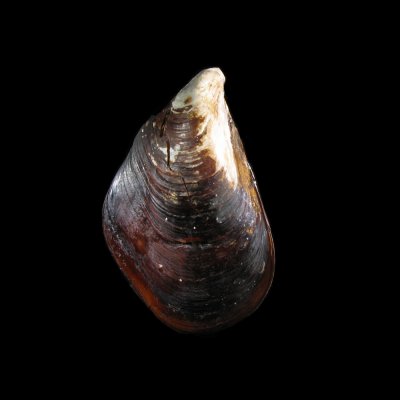
Igai |
|
Tashiki Hen 5vol. Doshun Hayashi 1631. There is fairly impossibility because Japanese names were named to the products of the foreign country. About 20 species(*) of shells' Japanese names are recorded. *)Kaki, Hamaguri, Mate, Tairagi, Shijimi, Kainotama, Awabi, Umikai, Madarakai, Hamaguri, Mate, Shirakihamaguri, Ohhamaguri, Akagai, Ohmigai, Takaragai, Kutsuwagai, Mirukui, Awasegai, Tanishi, Gouna, Tairagi. |
|
|
Joutei Gohyaku Kaizu Joutei Kichimonjiya 1688. Illustrated book of shells made by Emperor Reigen instruction and dedicated to court. Figures of shell are drawn by Indian-ink. and a lot of shells are written in one leaf. Each shells are named unique Japanese name without explanation. A lot of tropical shells are included. There are 500 figures(*) or more. However, the kind of number is less than it. *)Ishimaki, Renjaku, Akome, Umiusagi, Shokukoura, Tsuguchi, Tsutsumigai, Hanaitaya, Hitachiobi, Benimaki, Matsukawagai, Mayutsukuri, Mikurigai, Minomushi, Reishi, Koromo, Eboshi, Kumo, Kiraragai, Tsubamegai, Yakata, Futokoro, Kaiki, Tsuno, Tsunokigai, Kama, Kuda, Tachibana, Kushima, Kubo, Miyashiro, Kagami, Tamakibi, Nishikigai, Kinshi, Tsukihi, Furuya, Kuchiguro, Koma, Kanoko, Kuruma, Tamagai, Ebisu, Shobu, Shittaka, Su, Mizumaki, Une, Ishikawa, Akagai, Chigusa, Ougigai, Suou, Sodegai, Obi, Kumo, Tsugai, Shii, Tsume, Tsurukubi, Miyako, Miyashiro, Tomaya, Yatsushiro, Himesazae, Uroko, Tomigai, Tairagai, Naruto, Yane, Aburagai, Ryura, Ruri, Kagyu, Ame, Chou, etc. Some figures of the book are used for "Catalogue and Bibliography of the Marine Shell-Bearing Mollusca of Japan Type Figures. Higo, Callomon, Goto 2001". |
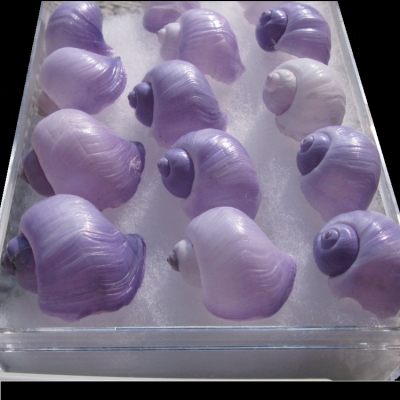 Rurigai Janthina prolongata Blainville, 1823 |
|
Honcho Shoku Kagami 12vol. Hitsudai Hitomi 1697. Foods which people usually eat are explained by the same form as Honzokoumoku. 30 species(*) of shells are explained to volume 10. *)Awabi, Kaki, Hamaguri, Asari, Shijimi, Kisa, Tairagi, Mate, Mirukui, Nagatagai, Karasugai, Sazae, Aki, Nishi, Naganishi, Horagai, Tanishi, Nina, Bai, Gouna, Uni, Inokai, Ohnogai, Shiofuki, Bakagai, Hotate, Koyasugai Sugai, Kisago, Takonomakura, Kase. |
|
|
Yamato Honzo Ekiken Kaibara 1708. Because the content of the book is based on the knowledge of the flora and fauna which the author obtained by the travel, originality is high. Volume 14 has belonged to shellfish and 41 species(*) are explained separately for Gastropod and Bivalve. Besides, there are nine species of appendices, one specie of the snail in land insect's part, and 30 shells are separately shown in the figure. *)Hamaguri, Shijimi, Asari, Dobugai, Mate, Umikagami, Takobune, Igai, Mirukui, Shirogai, Shiofukigai, Nejigai, Hotategai, Saruboh, Takaragai, Makigai, Kisa, Ishiwarigai, Torigai, Bakagai, Tairagi, Tsuzuragai, Umitake, Awabi, Mekaja, Yomenosara, Mate, Kaki, Tanishi, Koukai, Tsubeta, Sazae, Horagai, Warekara, Mina, Chishako, Katagai, Awabi, Murasakigai, Amarigai, Koyasugai, Magari, Benihamaguri, Shiofukigai, Mirokugai, Ohgai, Tachigai, Tsubetagai, Shiritakamina, Kaugai, Nishi, Sanshougai, Umenohanagai, Umihouzai, Yomenokasa, Okinishi, etc. |
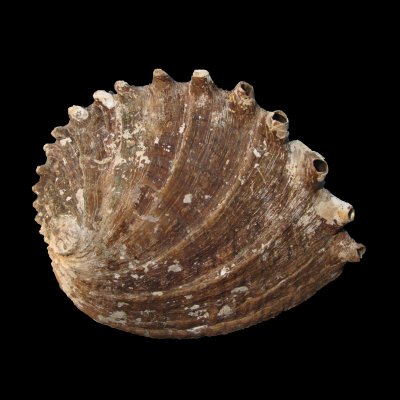
Awabi |
|
Wakan Sansai Zue 80vol. Ryoan Terashima 1713. Wakan means Japan and china. Sansai means the sky, ground and person. This book is an encyclopedia of illustrated. Volume 47 is shellfish's part. 67 species of shells are explained and 42 figures are shown.(*) Each figures lack precision regrettably. Because pictures such as water, wave, sea alga, and etc. are drawn next to shell's picture, it is unscientific. This book concentrates on the description of the effect of shells and the lives. And, it is interesting because there is an article on the fishery manufacturing and the shell industry and are customs in nations and various opinions etc. of China. *)Awabi, Shinju, Kaki, Nagatagai, Dobugai, Karasugai, Tairagi, Umikagami, Mate, Akoyagai, Shijimi, Hamaguri, Shiofuki, Asari, Azagai, Torigai, Akagai, Hotategai, Itayagai, Watarigai, Koyasugai, Takaragai, Umanokubogai, Kutsuwagai, Inokai, Bakagai, Mirukui, Umuginokai, Yonaki, Nishi, Akanishi, Sazae, Tanishi, Bai, Mina, Horanokai, Oumugai, Hoya, Kisago, Yakogai, Sugai, Mochigai, Takonomakura, Uni, Kamenote, Gouna, Kaidako, Takobune, Tokobushi, Sarubou, etc. |
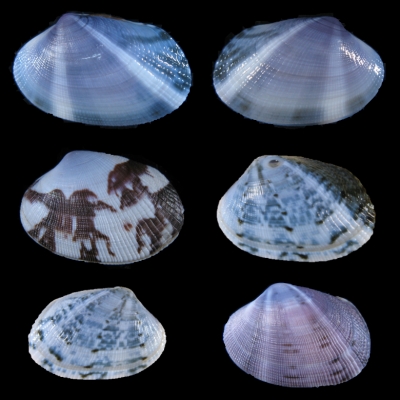
Asari |
|
Nitto Gyofu 4vol. Gensen Kanda 1730. The first fish and shellfish illustration of Japan. 7 species of abalone, 53 species of bivalves, 33 species of others, and 93 in total species of shells(*) are illustrated. Gensen is a town doctor of Edo age. *)Kawanina, Shijimi, Gomikai, Dobugai, Awagai, Tanishi, Katatsubu, Kaki, Hamaguri, Asari, Torigai, Shijimi, Kudamaki, Mate, Akagai, Haigai, Saruboh, Shiofukigai, Bakagai, Mekubasha, Igai, Mirukui, Umitake, Tairagi, Awabi, Tokobushi, Yomenosara, Sazae, Kosazae, Nishi, Shiranishi, Bai, Takaragai, Koyasugai, Minogai, Benigai, Momijigai, Naganishi, Konishi, Horagai, Tamagai, Tsukihigai, Kamurigai/Kamenote, Kuketsugai, Uzuragai, Amarigai, Utsusegai, Murasakigai, Karasugai, Takenokogai, Tsunogai, Tamagai, Tama, Kisago/Isago, Kurumagai, Ryuhgai, Tsumeta, Asagaogai, Shagoh, Hotategai, Ougigai, Itayagai, Shakushigai, Mina, Musubugai, Tsutogai, Kanokogai, Kohora, Sugai, Tsumi, Shitatami, Shittaka, Warekara, Miyakogai, Hagai, Takobune, Aogai, Wasuregai, Sudaregai, Umenohanagai, Sakuragai, Yanagigai, Nadeshikogai, Umigiku, Yamatonadeshiko, Nishikigai, Momijigai, Odamakigai, Amegai, Tengugai, Hishigai, Chidorigai, Suzumegai, Kazegai, Funegai, Tamotogai, Sodegai, Hotarugai, Kinutagai, Otomegai, Kamegai, Tamagashiwa, Namikashiwa, Hebigai, Magarigai. |
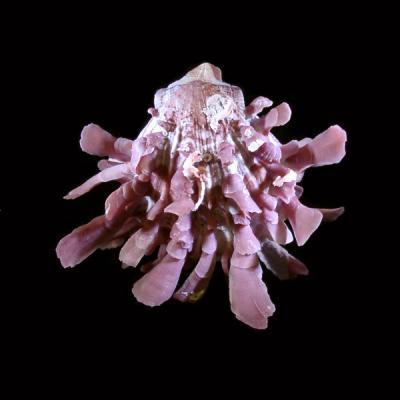 Umigiku Spondylus barbatus Reeve, 1856 |
|
Kaizukushi Ura No Nishiki 2vol., Ryuhou Oeda 1749. The first printed shell book in Japan. The thing which relates to shell's hobby is written. The author wrote in the postscript, 'There were a lot of Chinese books or shell names, etc. including Yamato Honzo. And these were written for food and industry. On the other hand, because I had written this book for the amusement, unsuitable shells to the toy did not write.' About 220 species(*) of shells are written. The volume 1 includes the following items: Waka no ura shinzu (= picture of Waka no ura beach), Kasengai irou hyakuyohin (=one hundred or more omitted Kasengai shells), Sumiyoshi no ura choukanzu (= picture of Sumiyoshi no ura beach), Zen Kasengai 36 hinpyo (= explanations of the first half of 36 Kasengai shells), Tajima takeno ura shinzu (= picture of Tajima take no ura beach), Kou Kasengai 36 hinpyo (= explanations of the latter half of 36 Kasengai shells), Genjigai haifu mokuroku (= Catalogue of Genjigai shells), Shinsen Kasengai (=Newly selected Kasengai shells). The volume 2 includes the following items: Zen Kasengai heizu (= figures of the first half of Kasengai shells), Kou Kasengai heizu (= figures of the latter half of Kasengai shells), Kaibuta zushiki, Kai awase you shinan (= how to play the Kai awase game), Sougai kyou (= Sougai sutra?). *)Haginotsuyu, Monoaragai, Kubogai, Ishidatami, Koshidakagangara, Katabegai, Kazuragai, Akukigai, Onisazae, Araregai, Mushirogai, Matsumushi, Kisewata, Budougai, Yakatagai, Ochibagai, Sudaregai, etc. |
|
|
Igansai Kai Hin 2vol., Gentatsu Matsuoka 1758. This book was published in 1758, but the date of the author's preface was 1740. Therefore, this book is earlier than Kaizukushi Ura no Nishiki. 29 species of bivalves, 14 species of gastropods, 72 species of Japanese shells, 18 species of crabs, 11 species of lobsters, and 13 species of others are contained in this book.(*) The word "Kai" usually means the shell. However, the "Kai" used for the name of this book contains shell, crab, and lobster. Each articles are based on the facts which the author actually saw and heard. And about 40 species of new items are included. Thus, the Igansai Kai hin and Kaizukushi Ura no Nishiki gave a large impact to Japanese Conchology. *)Otomegasa, Ebisugai, Higai, Kujakugai, Fudegai, Asagaogai, Sansyougai, Yomegasara, Kinchakugai, Kinugasagai, Shinobugai, etc. |
|
|
Kibai Zufu 1vol., Kenkado Kimura 1775. Miscellaneous notes which contain the following articles. Coloring pictures of beautiful shells which Kishu's collector have. Copy of shell's figure of book on Netherlands. Wonderful shells in various places. Shell's articles for food. Shell collector's list. Kenkado Kimura shows Pleurotomaria hirasei in this book, and said, 'Unnamed shell. Perhaps, it might be a kind of Agemaki'. *)Nejinuki(=Chimakibora), Onimushiro, Mumeigai(=Beni Okina Ebisu), Mizusuigai, Hiyokegai(=Suijigai), Kasen, Umiusagigai, Itokakegai, Hiyokugai, Shokukoura, Basyougai, Benishibori, etc. |
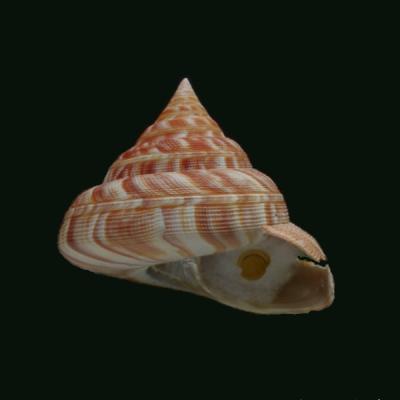
Beniokinaebisu Perotrochus hirasei (Pilsbry, 1903) |
|
Honzo Koumoku Keimou 48vol., Ranzan Ono 1802. Volume 42 is shell's part. Only 29 shells(*) are explained, but each explanation is very detailed. And the name of 310 shells is written in that. The first feature of this book is that all synonyms are enumerated first in the explanation sentence. This followed the style of Chinese honzo study which was not able to be executed easily with other honzo books or shell books. The second feature of this book is collation of Japanese things with Chinese name. At last, the established theory was made by Ranzan, though this was the most difficult work in past honzo study. *)Akanishi, Naganishi, Katatsuburi, Maimai, etc. |
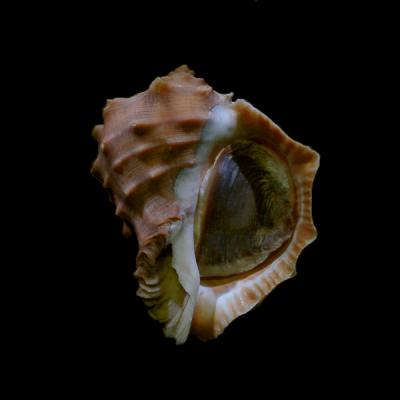
Akanishi Rapana venosa (Valenciennes, 1846) |
|
Nagisa No Nishiki 2vol., So Einen 1803. Volume1 is Gastropod's part, volume2 is Bivalve's part, total clause 123, and 540 shells. The appendix 54 shells are written.(*) Details are uncertain though there must be a beautiful coloring chart. So Einen calls the alias Senshun, and he is a person in charge of the document record in Satsuma Shimazu Shigehide. Senshun hung to the title out one shell as a representative. And, some shells which looked like it were recorded under that. *)Koshidakagangara, Hirasazae, Goshoguruma, Tsumetagai, Yukigai, Hoshidakara, Kinubora, Ryugubotaru, Asagao, Kuchibeni, etc. |
|
|
Roppyaku Kaihin 5vol. or 6vol. About 600 shells(*) were shown in the coloring chart, and Kanji name and the Japanese name were put up. There is neither record at the age with the author though this book occupies an important position with Nishiki no urazuto as a shell books of Japan. *)Sukashigai, Ebisugai, Natsumomogai, Kubogai, Katabegai, Yakohgai, Sanshogai, Rinbougai, Tamakibi, Ebigai, Kinugasagai, Tsuguchigai, Kumasakagai, Kazuragai, Matsukawagai, Okinishi, Akukigai, Onisazae, Bashougai, Mizusuigai, Matsumushi, Mushirogai, Mikurigai, Mayutsukuri, Hotarucai, Minomushi, Akomegai, Tokusagai, Asagaogai, Nejigai, Odamaki, Kurumagai, Benishibori, Budougai, Kujakugai, Hiyokugai, Kinchakugai, Hanaitaya, Umigiku, Umiasa, Shiofuki, Benihamaguri, Benigai, Ochibagai, Murasakigai, Fujinami, Sudaregai, Wasuregai, etc. |
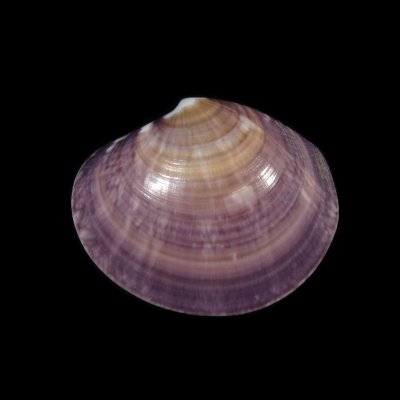
Wasuregai |
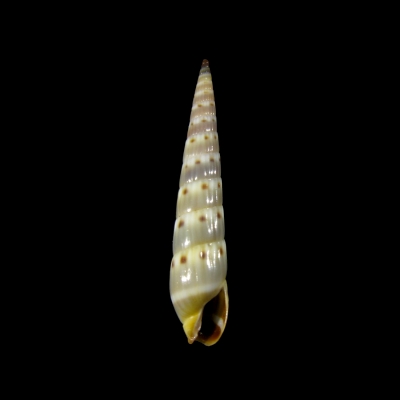
Shichikugai |
|
|
Uji Hisaoyu Kaizu 1vol., Arakida Hisaoyu. The cowry, the snail, and the clam, are distinguished, and 387 species(*) are sketched in the Indian-ink drawing. These specimens are collected in Kishyu, Ise, Owari, Enshyu, or Sagami. Each figures are accurate. A lot of front charts of the shell are drawn. Each shell's name is described. And, the information of locality was added to a part of shell. The author is a Shinto priest in the Ise Gaigu Shinto shrine and an authority of the Manyou study. *)Fukurogai, Shoujougai, Otomegasa, Yakougai, Rinbougai, Bashougai, Satsumabina, Tokusagai, Natsumegai, Marutsuno, Tatsunamigai, Akitagai, etc. |
|
|
Nishiki No Urazuto 3vol. Coloured illustration which 569 species(*) of shellfishes were explained. Figure is shown in the upper row on each page, and the explanation is described to the the lower. Figures are precise, and the explanations are also appropriate. *)Azamigai, Higai, Honegai, Yourakugai, Reishi, Takenokogai, Kurehagai, Mirukui, Kisagai, Shiosazanami, etc. |
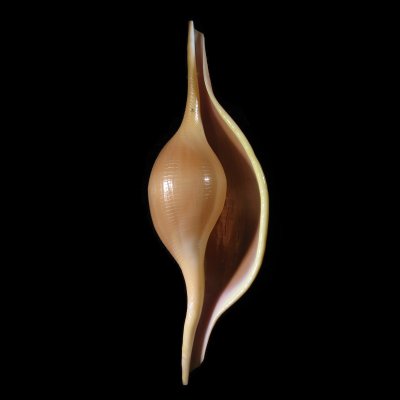
Higai 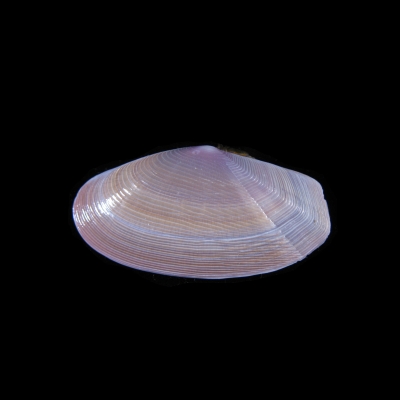
Shiosazanami |
|
Kishu Tanabe Kaihin Kakiage Mokuroku 1vol., 1814. This book is a shellfish's catalog which Tanabe's town magistrate made by the instruction of the feudal lord of Kishu. (Kishu is old name of Wakayama.) "Ushi no hana no tsunogai", "Butsugan no sharigai", and "Sango suna" are introduced as a special, natural product of Kishu. And the book introduces 317 of shells which contain the following shells. 196 species of shells which can be caught on beach such as Shikoro gai. 39 species of small shells which can be caught on beach such as Zakuro gai. 10 species of shells which can be caught on mountain or in river such as Kiseru gai. 6 species of shells which can be caught by longline fishing such as Itokake gai. Next year, Kiemon Sakaiya who had done this investigation made a new catalog named "Tanabe Kai karoku" which put the fixed prices on this catalog. According to the new catalog, Epitonium scalare is 5 ryou ( = 5000 US$), and Ovula ovum is 1 ryou ( = 1000 US$). Latiaxis mawae, Fulgoraria, and Spondylus regius are 2 bu ( = 500 US$). |
|
|
Kaishu Zusetsu 2vol. One volume consists of figures, and other volume consists of explanations. 691 shells are drawn in the Indian-ink drawing. Thing to have classified thin Bivalve, round Bivalve, coiled shell, and abalone is different though the pattern is the same as Roppyaku Kaihin. The explanations are same as Nishiki no Urazuto. This book is not an original articles, and an adaptation of an existing book. It might be a draft of Gunbun hin syu. |
|
|
Kanbun Kaifu Masahira Hotta 1830 - 1843. This book compiled shell article on 213 goods (*) from other books. The author is 2 generation in Sano clan feudal lord, and he became Wakadoshiyori of the shogunate. And, he was a natural scientist. *)Tengai, Uminina, Chirimendakara, Yatategai, Sakuragai, etc. |

Sakuragai |
|
Kaihin (Gohyaku Kai Zu) 1vol. This book looks like Roppyaku Kai Hin than Joutei Gohyaku Kai Zu. The book of Wakayama clan is an Indian-ink drawing with a sign of Japanese natural scientist Yoshinao Kohara of this clan. *)Yatsushirogai, Amegai, Tairagi, Inamigai, Nerigai, etc. |
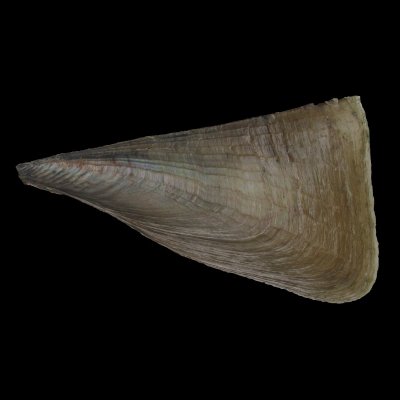
Tairagi |
|
Toukyo Kai Hin 11vol., Lord of Ohgaki. More than 600 species of shells' coloring charts are shown. These shells are displayed according to each shell's name. |
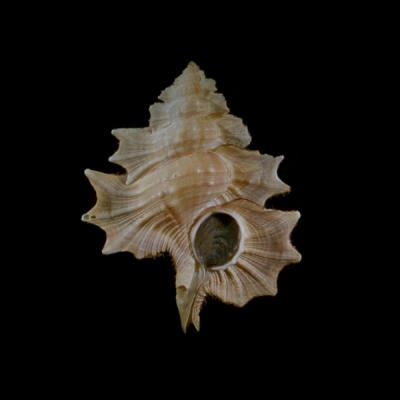 Matsukawagai |
|
Koukai Gunbun Hinsyu 2vol., Sekiju Musashi 1836. Each shell's figures were copied from Roppyaku Kaihin. These are classified into five kinds which contains thin bivalve, round bivalve, coiled shell, abalone, and unnatural form.(*) Shell's explanations were copied from Nishiki no Urazuto. *)Hoshidakara, Umiusagi, Tsutsumigai, Miyashirogai, Araregai, Kinubora, Tsunokigai, Ryuguhbotaru, Satsumabina, Fudegai, Shokukoura, Rurigai, Ohitokake, Sekimori, Makimonogai, Yakatagai, Natsumegai, Takobune, Chiyonohanagai, Momogai, etc. |
|
|
Mokuhachifu 15vol., Sekiju Musashi 1843. 997 species(*) of shells are sketched and classified into 7 kinds which contains abalone, thin & round bivalve, oister, coiled shell, fist formed coiled shell, spiny coiled shell, and top shell. This is a book which Sekiju most ardently made. Each shells are drawn in a beautiful coloring charts with detailed explanation. In 1902, Dr. Koutaro Shirai found the original of this book by chance in the bookstore in Tokyo. And, he presented this book to the empire library. Therefore, the original escapes the disaster of the Kantou great earthquake, and remains completely now. *)Okina Ebisu, Tokobushi, Kuzuyagai, Yukino Kasagai, Tsutanoha, Kasagai, Matsubagai, Yomegakasa, Ishidatami, Henatari, Hanamaruyuki, Juseira, Horagai, Bohshubora, Bai, Benimaki, Chimakibora, Bekkouimo, Kisewata, Ohmugai, Saruboh, Igai, Akoyagai, Umenohanagai, Tomayagai, Torigai, Bakagai, Mategai, Asari, Kuchibenigai, Umitake, Marutsunogai, etc. Each Shell's figure was drawn by Sessai Hattori. Because this book is open to the public now on the Web site at the National diet library, we can easily inspect it. |
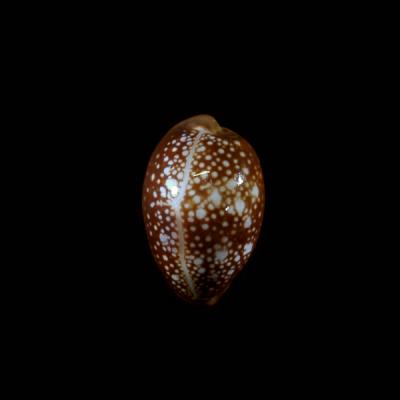 Hanamaruyuki Cypraea caputserpentis mikado (Schilder, 1938) |
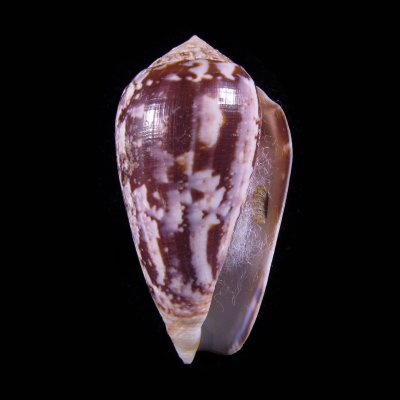
Becko Imo Conus fulmen (Reeve, 1843) |
|
|
Kai Shi 10vol.(5 vol. of text, 5 vol. of figure.), Tomoari Kuroda. 2360 shells which consist of 15 genus and 2233 species(*) are shown. In old shell's document of Japan, shell's figures of this book is the most abundant. Figures are accurate though are the Indian-ink drawing. The explanations are concise and keep the point. Many shell's Japanese names such as Karasuki, Kansugai, Niwatorigaki, and Yamino nishiki are from this book. The system of the study of this book is different from Mokuhachifu, and, shell's names of both are also different. Value as the research material can be admitted in the respect. *)Kansugai, Touito, Karasuki, Kasengai, Kagabai, Momijibora, Shima Araremikuri, Miotsukushi, Shinobugai, Tsubamegai, Kagerougai, Niwatorigaki, Yamino Nishiki, Oinokagami, Kamojigai, Semiasari, etc. Mr. Tajima Kanamaru said in Venus 1(3) 1929 that this book was written in 1830-1843. However, he also said in Venus 11(2-3) 1941 this book was written after Mokuhachifu. |
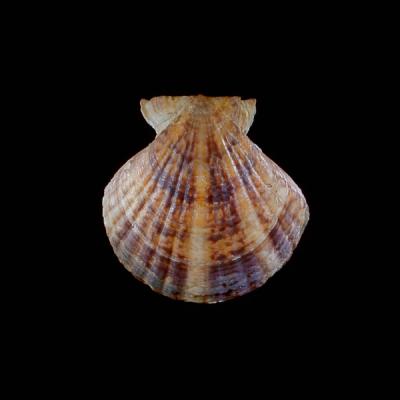 Yamino Nishiki Volachlamys hirasei (Bavay, 1904) |
|
Honzo Honzo study is study by which a natural object such as animals, minerals and plant is reserched from the viewpoint of the medicinal use. Manyou study Research of Manyoshu. Manyoshu is the first Japan collection of poems. 20 vol., 4536 poems are included. The poem of various length made in the 7-8th centuries is put in this book. Zouka: The public work sang at chances such as the festivals and the ceremonies of the court is abundant. Soumon: Man and woman's love poem, or gift poem. Banka: Poem for funereal of the dead. Poem of mourning. The author of the poem is traveler from Kyoto, criminal isolated to solitary island, and the citizens with uncertain name. The poem of a simple folk song style is included. The monument of a lot of poems are put up in the place of the connection now. |